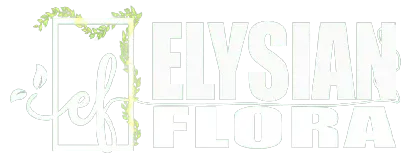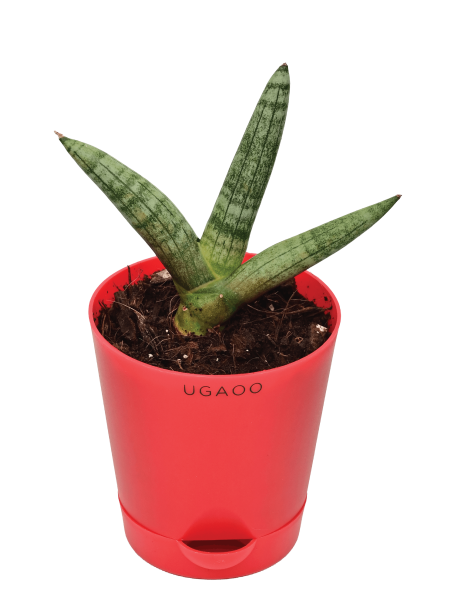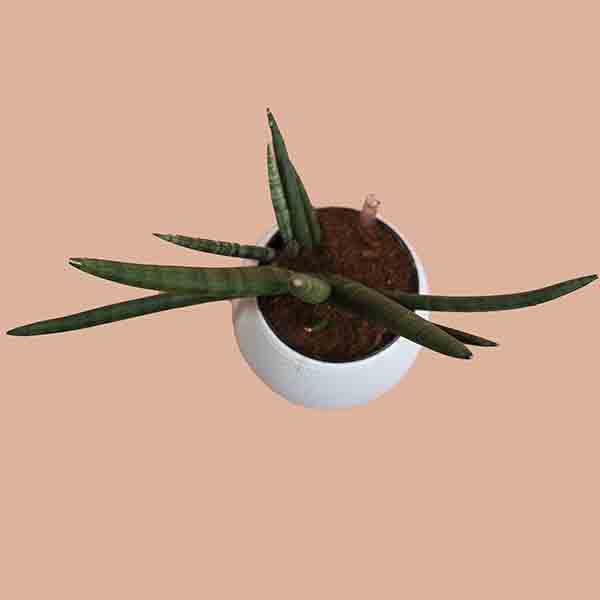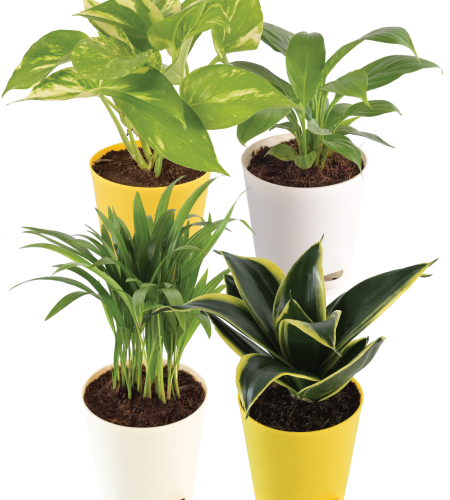Dracaena angolensis (Cylindrical snake plant) is the most popular air-purifying, succulent plant. It has striped, elongate, smooth, greenish-gray subcylindrical leaves. It grows up to 2 m above the soil and about 3cm in diameter. The spear sansevieria grows fan-shaped, with its stiff leaves growing from a basal rosette. It produces greenish-white tubular flowers that are tinged with pink. Dracaena angolensis is mildly toxic if eaten. Keep away from children and pet animals.
Scientific classification:
Family: Asparagaceae
Subfamily: Nolinoideae
Genus: Dracaena
Species: D. angolensis
Scientific Name: Dracaena angolensis
Synonyms: Acyntha cylindrica, Cordyline cylindrica, Sansevieria angolensis, Sansevieria cylindrica, Sansevieria livingstoniae.
Common Names: Cylindrical snake plant, African spear, Spear sansevieria, or Saint B?rbara sword.
How to care and grow Dracaena angolensis (Cylindrical snake plant)?
Light:
Cylindrical snake plant requires bright, filtered light and can stand plenty of direct sunlight.
Soil:
Dracaena angolensis thrives best in well-drained, sandy soil enriched with peaty compost.
Water:
Water your plant regularly during the growing season and always keep the soil evenly moist but not soggy. You can allow the topsoil to become slightly dry between each watering. During the winter months, reduce watering.
Temperature:
It prefers an average to warm room temperatures 65 ? 75 degrees Fahrenheit / 18 ? 24 degrees Celsius. It will endure fluctuating temperatures, but not below 55 degrees Fahrenheit / 13 degrees Celsius.
Fertilizer:
Fertilize monthly during the active growth periods in the spring and summer, with a liquid or water-soluble fertilizer. Try not to fertilize during the winter season.
Propagation:
Dracaena angolensis can be easily propagated by dividing up overcrowded clumps of leaves. Separate clusters of leaves from rootstock with a sharp blade or knife when the leaves are six inches long. Most clusters will have some roots attached and can be planted directly in the normal potting mixture. Also can be propagated by leaf cuttings.
Re-Potting:
Re-pot the plant during the spring season, only when plants get crowded and need dividing.
Pests and Diseases:
There is no serious pest or disease problems. Watch for bugs, spiders, and mealybugs.
Benefits of Cylindrical snake plant (Dracaena angolensis):
It is popular as an ornamental plant, best plant to keep in your house or office. It filters airborne toxins and is part of our perfect air plant accumulation.
This is a one-of-a-kind member of the famous sansevieria family. It has plump, short leaves that resemble spears but are completely safe. It fills the container it grows in with its characteristic white or green stripes that stretch out into a starfish-like pattern. The Boncel requires just strong indirect light to develop and has enough personality to stand on its own.
Plant Care
Fertilizer/ plant feed: Feed your Boncel a balanced houseplant fertiliser weekly from late spring to fall. During the winter, avoid fertilising your plant.
Repotting : As your plant grows taller and larger, you will need to repot it every 1 to 2 years. Propagation: Dividing your plant is the simplest method of propagation. Cut the main plant in half at the main rhizome through the root using a sharp knife, then replant the pieces.
Typical issues
1. What is causing my Boncel to droop?
The major reason of your plant’s drooping is root rot.
2. How come my Sansevieria Boncel isn’t growing?
The most common reason for your Snake Plant not growing is root rot caused by overwatering. Cut any rotten roots and repot your plant in this scenario.
3. What is causing my plant to become yellow?
The leaves of Sansevieria Boncel become yellow for a variety of causes. Plant yellowing is caused by either overwatering or underwatering. Yellowing can also be caused by an excess of fertiliser or a lack of sunshine.
Design and Decoration
Light Requirements: Sansevierias require indirect and steady sunshine. This resilient plant can handle both low and high light levels. To protect your plants from burning, keep the Sansevieria away from direct sunlight. Sansevierias love sunny, shady places with indirect sunlight.
Location :Your plant will thrive in living rooms, bedrooms, shaded patios, and workplace workstations. Sansevierias look great on their own or in groups with other foliage plants. This dwarf variant is ideal for workstations, side tables, and bookshelves. The beauty of a snake plant is that it may be used in almost any setting.
Styling/decor tip : To rapidly increase the aesthetic factor of your home, our d?cor experts recommend placing the snake plant in one of our gorgeous in-house pots and grouping it with plants of contrasting leaves.











Reviews
There are no reviews yet.